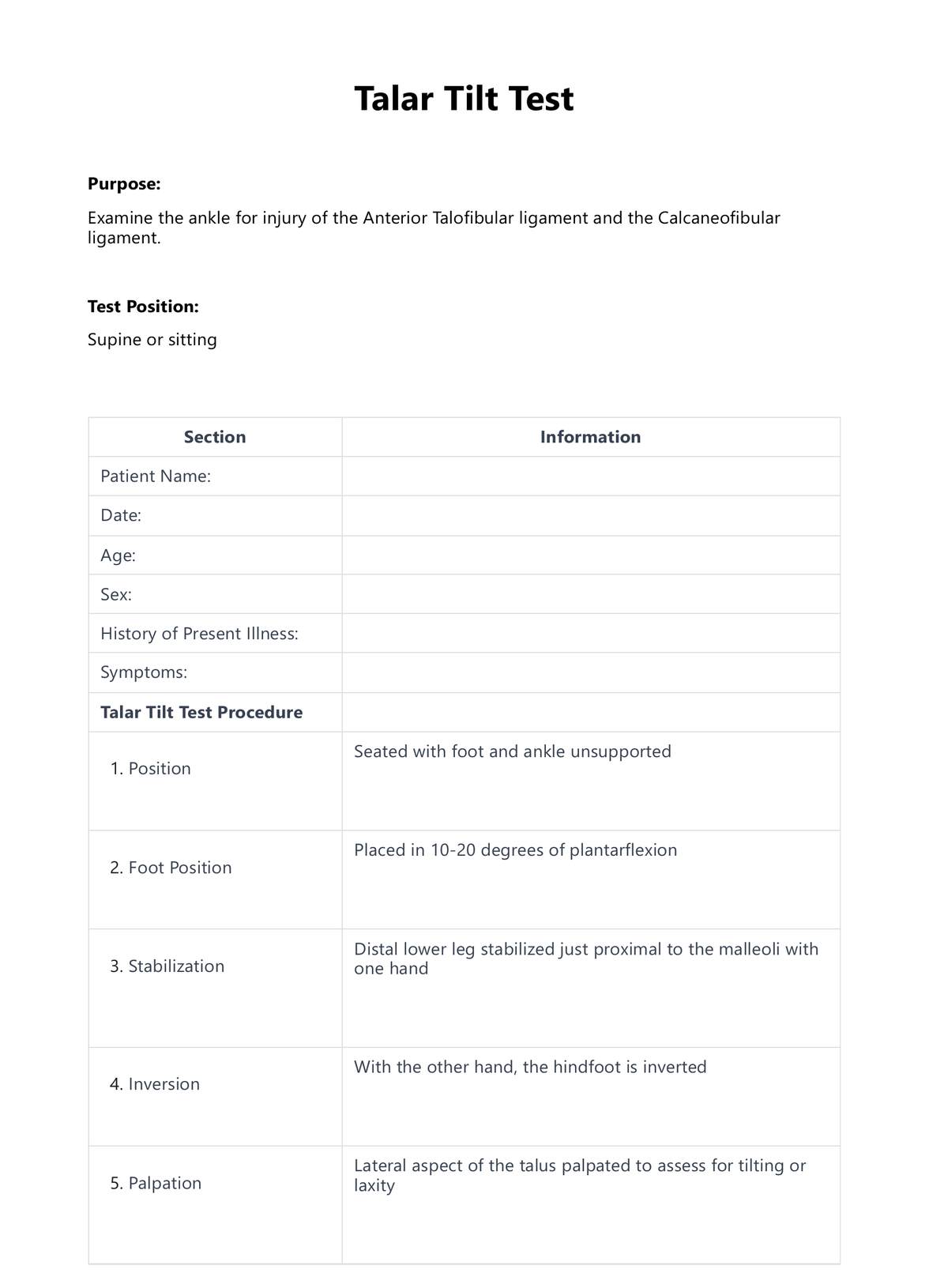The interpretation is based on comparing the affected ankle to the unaffected one. Excessive tilt or pain during inversion may indicate a sprain or tear of the lateral ligaments.

Talar Tilt Test
Uncover the crucial aspects of the Talar Tilt Test, an essential tool for assessing ankle ligament integrity. Grab your free PDF guide today!
Talar Tilt Test Template
Commonly asked questions
The test measures the integrity of the lateral and medial ankle ligaments, particularly the anterior and calcaneofibular ligaments.
The patient is seated with the foot and ankle hanging unsupported. The foot is in mild plantarflexion, typically around 10-20 degrees. The examiner stabilizes the lower leg with one hand just above the ankle bones (malleoli) while the other hand inverts the hindfoot. The lateral aspect of the talus is palpated to assess for any tilting or excessive movement, which could indicate ligamentous injury.
The procedure is repeated on the unaffected side for comparison. Pain during the test or a more significant degree of tilt than the unaffected side suggests a positive Talar Tilt Test, indicative of potential ligament damage.
EHR and practice management software
Get started for free
*No credit card required
Free
$0/usd
Unlimited clients
Telehealth
1GB of storage
Client portal text
Automated billing and online payments











